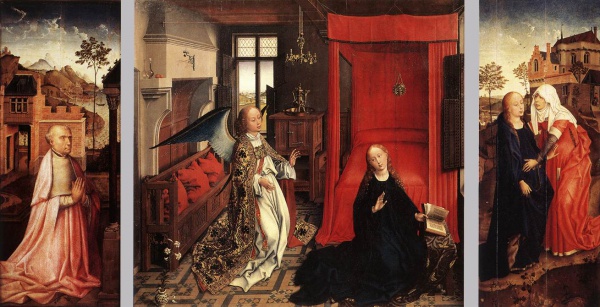Facts About Annunciation Triptych
The Annunciation Triptych is a remarkable oil-on-panel masterpiece by Netherlandish artist Rogier van der Weyden, believed to have been painted around 1434. Originally composed of three panels, the central piece is now housed in the Louvre Museum in Paris, France, while the side panels are located in the Galleria Sabauda in Turin, Italy.
Van der Weyden's early work reflects the influences of notable artists such as Robert Campin and Jan van Eyck. The central panel depicts an exquisitely detailed scene set in a domestic interior, where a richly dressed angel appears to the Virgin Mary as she reads from the Holy Books. The artist's meticulous attention to detail is particularly evident in his representations of reflective objects like the lamp, jar, and medallion. The composition is distinguished by an elevated horizon line, a common feature in Netherlandish paintings of the era.
The side panels share similar characteristics but are set against more luminous landscapes. Background elements gradually recede into a hazy distance, creating an effect of aerial perspective that enhances the depth and realism of the scenes.

 Vatican
Vatican